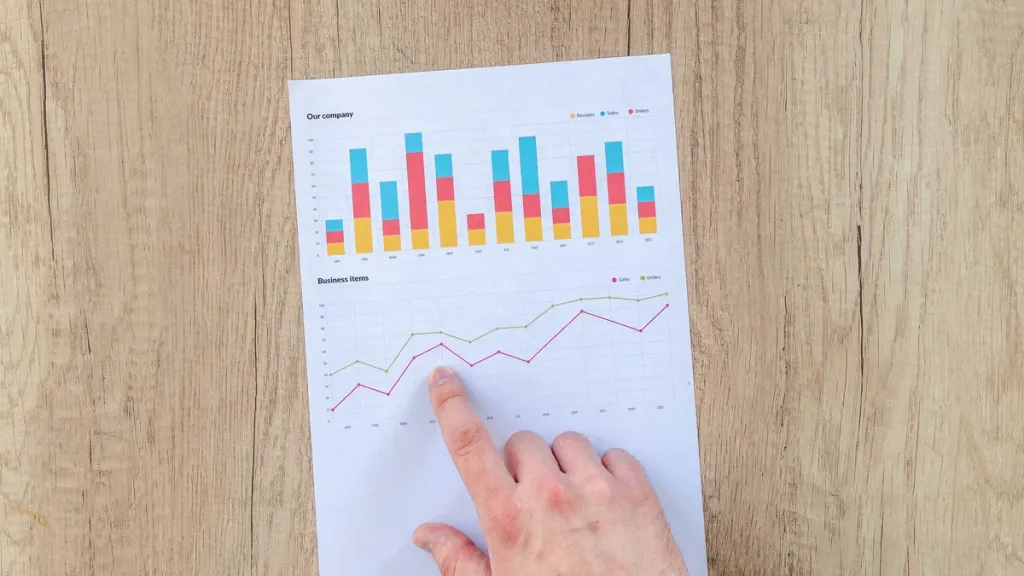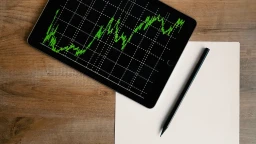Difference between Investing and Trading

There is a lot of confusion when it comes to the difference between investing and trading. Some people think they are one and the same, while others believe there is a clear distinction. So, what is the difference? This article will help you understand the difference between Investing and Trading.
What is Investing?
When it comes to investing, there is a lot of confusion out there about what it actually entails. So, let’s start with the basics. Investing is simply putting your money into something with the expectation that it will grow over time. This can be done in a variety of ways, such as buying stocks, bonds, real estate, or other assets.
The key difference between investing and trading is that investors are looking to hold their assets for the long term, while traders are more interested in short-term gains. This difference in time horizon means that investors are more focused on the underlying fundamentals of an asset, while traders are more concerned with market trends and price movements.
There are many different strategies that can be used when investing, but the most important thing is to have a clear understanding of your goals and risk tolerance. With that being said, let’s take a closer look at some of the different types of investments that you might consider.
What are the types of investors?
Different types of investors have different investment objectives. Some investors want to earn income from their investments, while others want to grow their wealth over time. There are also investors who seek both income and growth.
There are four main types of investors:
1. Income investors
2. Growth investors
3. Value investors
4. Hedge fund managers
Income investors seek to generate regular income from their investments, through dividends or interest payments. They invest in companies that pay regular dividends, or in bonds that provide a consistent stream of interest payments.
Growth investors seek to achieve capital gains by investing in companies that are growing at an above-average rate. They are willing to sacrifice some current income for the potential of future growth.
Value investors look for stocks that they believe are undervalued by the market, with the goal of earning capital gains when the stock price rises.
Hedge fund managers use a variety of strategies to try to achieve their investment objectives. They may use leverage and short selling, and they may take long and short positions in different securities.
What is Trading?
When it comes to putting your money in the market, there are two main approaches you can take: investing and trading. Both have their own set of strategies, risks, and rewards. So, what’s the difference?
Investing is all about buying assets and holding onto them for the long-term. The goal is to ride out the ups and downs of the market and come out ahead in the end. This takes patience, discipline, and a stomach for risk. But it can also lead to big returns over time.
Trading, on the other hand, is more about short-term gain. Traders buy and sell assets quickly, looking to profit off of short-term price changes. This approach is often more hands-on than investing, as it requires constant monitoring of the market. And it can be more risky—you could end up losing money if you don’t know what you’re doing. But done right, trading can also be quite profitable.
So which approach is right for you? It depends on your goals, risk tolerance, and time frame. If you’re patient and willing to take on some risk, investing may be a good choice. If you want to try to make quick profits and are comfortable with a higher level of risk, trading might be a better option.
What are the types of traders?
There are three main types of traders:
1. Day traders: These traders buy and sell securities within the same day. They make their profit by taking advantage of the price movements in the market.
2. Swing traders: These traders hold their positions for a few days to weeks, looking to take advantage of larger price swings in the market.
3. Position traders: These traders take a longer-term view of the market, holding their positions for months or even years. They aim to profit from both the upswings and downswings in the market.
Difference between Investing and Trading
The terms trading and investing are often used interchangeably, but there is a big difference between the two. Trading is all about buying and selling assets in order to make a profit, while investing is all about putting your money into something in order to grow your wealth over time.
Hereare some key differences between Investing and trading:
- Time frame: Trading is a short-term activity, while investing is a long-term activity.
- Risk tolerance: Trading involves more risk than investing.
- Goal: The goal of trading is to make a profit, while the goal of investing is to grow your wealth over time.
- Strategy: Trading is often based on technical analysis, while investing is usually based on fundamental analysis.
- Fees: Trading typically incurs higher fees than investing.
1. Time frame

Trading is a short-term activity, while investing is a long-term activity. The time frame for investing is much longer than the time frame for trading. When you invest in a company, you are buying shares of that company with the intention of holding onto those shares for a long period of time – typically years or even decades.
You are betting that the company will be successful and grow over time, and your goal is to see the value of your shares increase. In contrast, when you trade, you are buying and selling assets with the intention of making a profit from the short-term price movements. You are not as concerned with the long-term prospects of the company, and your goal is to make money from the trades you make in the market.
2. Risk tolerance

Trading involves more risk than investing. When it comes to investing and trading, risk tolerance is an important factor to consider. Investing typically involves a longer time horizon and a buy-and-hold strategy, while trading is more short-term and active. Risk tolerance is different for everyone, and there’s no right or wrong answer. It depends on your personal goals, financial situation, and approach to investing.
If you’re risk-averse, investing may be a better fit for you. You’re more likely to focus on capital preservation and building wealth over time. If you’re willing to take on more risk, trading may be a better option. You’re more likely to be focused on making quick profits and taking advantage of market swings. Ultimately, it’s up to you to decide what level of risk you’re comfortable with. If you’re not sure, it’s always a good idea to speak with a financial advisor.
3. Goal
The goal of trading is to make a profit, while the goal of investing is to grow your wealth over time. There is a big difference between investing and trading. When you trade, you are buying and selling securities in the hope of making a profit from the short-term price movements. When you invest, you are buying securities with the intention of holding them for the long term.
Investing is all about buying and holding securities for the long term. The goal of investing is to grow your wealth over time. To achieve this, investors typically buy stocks, bonds, or other assets and hold them for years or even decades. Trading, on the other hand, is all about making money from short-term price movements. Traders buy and sell securities rapidly, trying to take advantage of small price changes. Often, traders hold securities for only a few minutes or hours before selling them off again.
4. Strategy
Trading is often based on technical analysis, while investing is usually based on fundamental analysis. Trading is all about buying and selling assets in the short-term, in hopes of making a profit. On the other hand, investing is about putting your money into assets that will grow over time. Investing is a more passive form of wealth building, while trading is more active.Investors typically buy stocks, bonds, or other securities and hold them for years or even decades. They are more concerned with the long-term growth of their investment, rather than making a quick profit.
Traders, on the other hand, are always looking for opportunities to buy and sell securities in the short-term. They try to take advantage of market fluctuations to make a profit. Another key difference between investing and trading is how you approach risk. Investors are usually willing to take on more risk for the potential of higher returns.Traders are more risk-averse and often use stop-loss orders to limit their losses. So, which is better? It depends on your goals and personality. If you’re looking to build wealth slowly over time, then investing is probably the way to go. If you’re more interested in making quick profits, then trading might be for you.
5. Fees
Trading typically incurs higher fees than investing. Investing typically has lower fees than trading. This is because when you invest, you are buying and holding onto assets for a long period of time. You are not frequently buying and selling, so the brokerages don’t charge as much for their services.
Trading, on the other hand, has higher fees. This is because you are constantly buying and selling assets, so the brokerages charge more for their services. In addition, if you are day trading or swing trading, you may also have to pay additional fees for things like margin accounts and shorting stocks.
Who should consider investing and trading?
So who should trade and who should invest? It really depends on your goals and objectives. If you’re looking to make quick profits from short-term market movements, then trading may be right for you. But if your goal is to build long-term wealth or generate income through dividends, then investing may be the better option.









